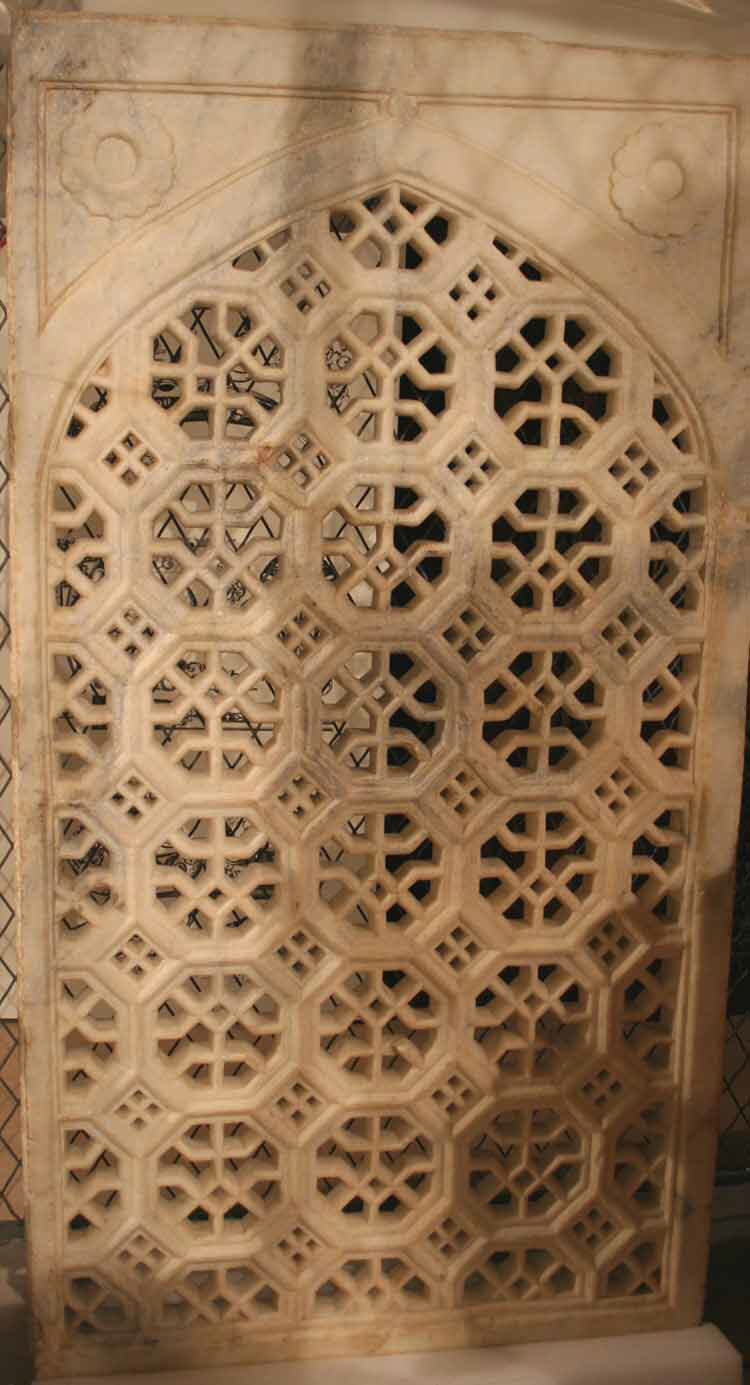Pierced Window Screen (Jali)
Pierced screens of pink sandstone or white marble were widely used in Mughal India and fulfilled many architectural functions, serving as windows, room dividers, and railings. They allowed for the circulation of air and provided shelter from sunlight, but the geometric patterns and their reflections also yielded aesthetic effects. A diaper pattern of octagons and small interstitial lozenges outlined by thick frames forms the main surface; behind this pattern is a second grid, which consists of staggered rows of octagons interwoven with lozenges connected by vertical bars that extend through the centers of the alternating rows of hexagons. The overall pattern, created with outstanding technical skill, is engaging but not entirely succesful, since the thick frames of the elements that make up the first grid prevent an appropriate geometric and aesthetic reading of the second and more complex level of the composition.
Due to rights restrictions, this image cannot be enlarged, viewed at full screen, or downloaded.
This artwork is meant to be viewed from right to left. Scroll left to view more.



